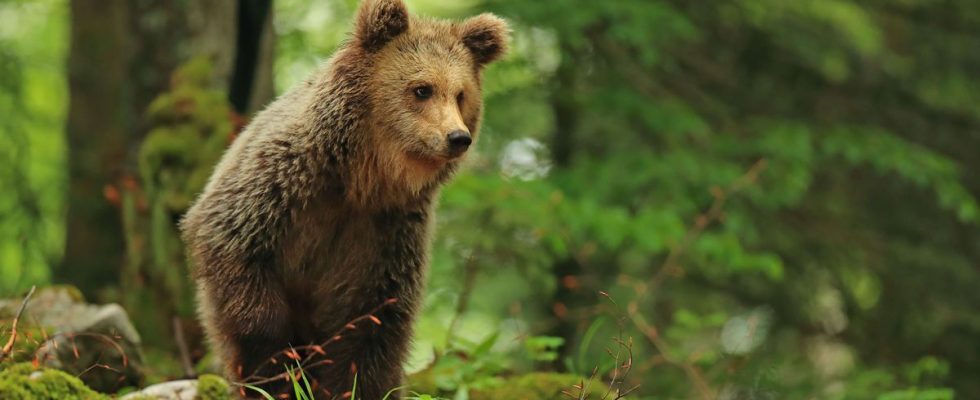From our special correspondent in Foix (Ariège),
“He was twenty meters from the cabin! And despite the big headlight, the dogs barking, he didn’t back down. He left big footprints. “This Monday evening, at the Ariège Chamber of Agriculture, “the night of anguish” experienced by two shepherdesses last week on a summer pasture in Haut Couserans where a bear was prowling fueled the conversations around the good big country buffet. There are breeders, hunters, hikers – often all three at the same time – from nine valleys in a department that is by far the most popular with Pyrenean plantigrades. “90% of the bears are with us, there are at least 70, all from the reintroduction”, assures Magali Lacube, administrator of the Aspap* association at the forefront of the fight against the presence of these “large predators” in the massif and which multiplies the alerts on its Facebook page since a jogger was killed by a bear in Trentino, Italy.
For this evening in Foix, the watchword was simple: “Bring your knife and your phone”. The knife to cut large loaves of bread and charcuterie, the telephone to join the circle of “9G” subscribers in the Ariège mountains. At the top of the external spiral staircase, the volunteers created nine reception islands, one for each valley concerned. Everyone chooses their own, the Mont d’Olmes for example for Maxence, 21, “son and grandson of a farmer”.
“Jogging in the middle of 200 kg animals”
A few veterans download WhatsApp for the first time, and in two or three minutes of tapping the evening visitor integrates the “loop” of his corner. A loop that will “instantly” alert the community, at the slightest footprint, the slightest discovery of a tuft of hair, or worse, in the event of the appearance of a bear. “In the latter case, the members agree to notify their mayor and the authorities. We do it to help each other in the pastoral community but also for mushroom pickers, walkers, hikers, explains Magali Lacube between two announcements on the microphone and a charger repair. Because we don’t believe the fable that the bear is nice and because it’s not because we live in Ariège that we have to jog among 200 kg animals. »
Geolocating bears is already possible, on the state website. You can see official reports, attacks on herds under investigation, the return of “camera traps” placed by technicians from the French Office for Biodiversity (OFB). “As long as you are patient,” gently slips in Sandrine. The young breeder in the process of settling in Haute-Ariège has just joined the Vicdessos group, her favorite territory for hiking, “every week”, with her group of friends. Thanks to the loop, “we will leave more serene”, she says, not excluding “changing the route at the last moment” according to information from the network. About fifty occasional hikers, not from Ariège, who had heard of the “9G” sent an email and will soon also be “integrated” into the loops by the volunteers.
“I’d rather avoid them than end up in prison”
“Me, it’s because I’m a hunter and I’d rather avoid them than end up in prison,” says Annie. Salt and pepper hair cut short, she alludes to the hunter attacked by a bear in 2021 in her Ustou valley and still prosecuted for “destruction of a protected species”. The 50-year-old, brand new “administrator” of the local group, lives “in town”, in Saint-Girons, but her two sisters are still breeders “up there”. One of them has already encountered a bear. “She was scared of her life.”
Alain, breeder in the Mont d’Olmes, also has his bear story. He lost a bull calf in 2017. “The bear, I have a nightmare about it every night, it even ruined my health,” he confides. Convinced that the authorities are minimizing the danger, including for tourists, he would like, on occasion, that city dwellers “revise their SVT course”. “We know how nature works! Our shepherds, our animals are now living in permanent stress”, assures Gisèle, the president of a pastoral group victim of one of the biggest “rockings” of recent years. Dozens of frightened sheep threw themselves into the void. The breeder joined all the groups on Monday “to watch over each other”. She is “worried about [ses] trainee shepherdesses”, left to continue their training elsewhere in the massif. She wants “to be able to warn them in case of danger”.
* Association for the preservation of the Pyrénées-Ariège heritage

